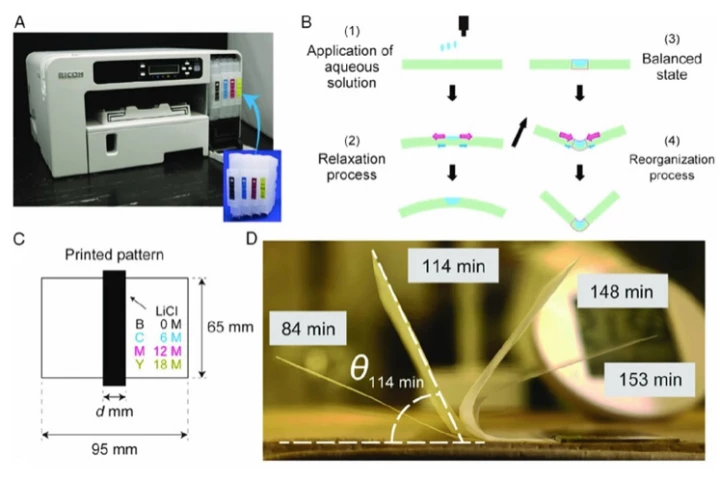Inkjet
-
A consortium of researchers from four European countries is developing a way to tattoo microbes on the exterior of buildings. These "living tattoos" will be able to suck carbon out of the air, protect the buildings, and even make them glow.
-
Ordinarily, if you want to make a 3D-printed liquid-filled object, you have to inject the liquid after the object has been printed. A new process, however, allows such items to be printed in one step – and it could have some valuable applications.
-
When plants perform movements such as curling their leaves, they do so by drawing water into the cellulose fibers in that part of their "body." Scientists have now replicated that technique to produce self-folding paper structures.
-
Engineers have optimized a novel technology that uses temporary tattoo electrodes to record EEG brain activity. The technology is cheap, can be produced using an inkjet printer, and delivers EEG measurements as accurately as traditional electrodes.
-
Inkjet printers may be an inexpensive way to print out holiday snaps, but they can be fragile machines and end up at the city dump well before they hit kindergarten age. Italian maker Michele Lizzit has designed a way to make use of spent printers to build an operational 3D printer for just €10.
-
Tattoos could soon have more practical uses. A team of researchers from Waseda University in Japan has developed a simple new method to manufacture electronic tattoos, printing the conductive “wiring” with a basic inkjet printer and joining components without the need for solder.
-
Stretchable electronics that could be integrated into clothing are usually expensive to produce. But researchers at Michigan State University have used a plain old inkjet printer to make stretchy circuits that could form the basis of smart fabrics, deformable tablets and electronic wallpaper.
-
Researchers at the University of Utah have devised a method to create invisible images embedded within normal-looking images using cheap inkjet printers. The data hidden in these images can then only be revealed using sub-millimeter electromagnetic radiation
-
Scientists have used inkjet printing technology to create easily-replaceable cores for inexpensive organic lasers.
-
While most of us may not give much thought to the dyes used in color inks, they are in fact often quite toxic. That's why scientists have developed a more eco-friendly alternative – a non-toxic ink that produces different colors by altering the nanostructure of the material to which it's applied.
-
It's nice when baristas draw little things like hearts in the foam on your coffee. There's a chance, however, that those designs may be going the way of cave paintings. That's because Steam CC recently introduced its Ripple Maker, a machine that reproduces photos or other graphics on coffee foam.
-
Scientists have created a picture that only fleas could truly appreciate. That's because the inkjet-printed image takes up an area no larger than the cross-section of a human hair.
Load More











